Many customers being lactose intolerant ask us: Can I make milk kefir with lactose intolerants? Do I tolerate selfmade milk kefir having a lactose intolerants? Everything you need to know about keeping the lactose level low inside your milk kefir and the answer if kefir is lactose free, you will get in this article.
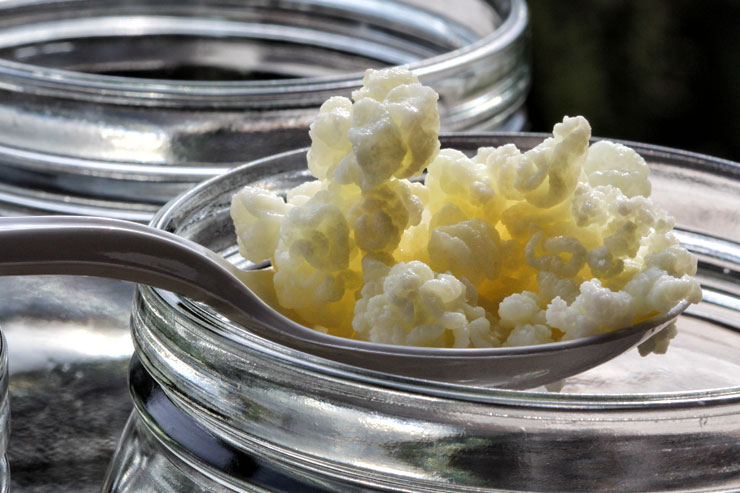 our organic high quality milk kefir waits here for you*
our organic high quality milk kefir waits here for you*
How much lactose does kefir contain?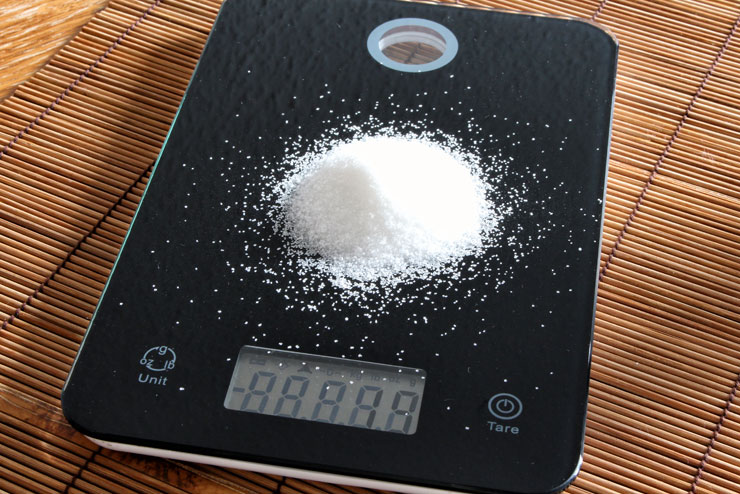
All fermented cultures like milk kefir (as well as kombucha or water kefir) do need sugar for the fermentation process. With sugar the cultures win energy and make the milieu sour to protect themselves from extraneous agents. For the milk kefir the lactose, the sugar of the milk, is their main food source. Therefore, during fermentation, the lactose level sinks significantly because it is all used by the milk kefir.
How do I get my milk kefir lactose free?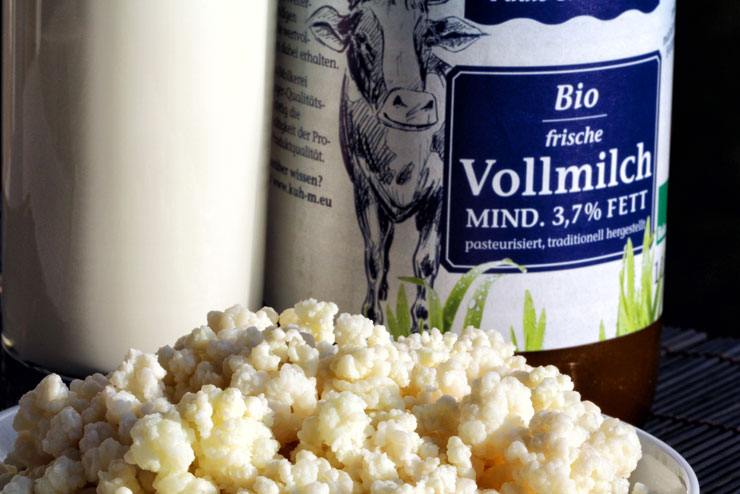
There are 2 factors that influence the lactose level in your milk kefir. If you optimise them, your lactose level will get up to zero percent.
- Fermentation time: The longer you let the milk kefir ferment, the lower the lactose level gets. An important indication for it is the rising acidity. The sourer your kefir gets, the less lactose it will contain.
- Ripening of the milk kefir after fermentation: After you kefir fermented 2-3 days with the kefir with the grains, there is another step you can do called ripening. In this procedure you can lower the lactose level even more.
How do I ripen my milk kefir?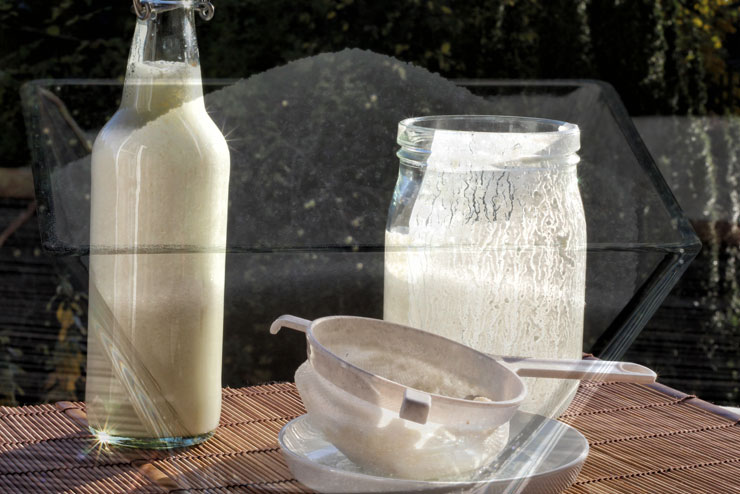
- Remove kefir grains and fill the ready milk kefir into a suitable and lockable glass until it is ¾ full
- Close the lit until first resistance to make sure gas is able to escape. You can also use one of our special glasses with airlock*
- Now, let it ferment 5-10 days. The fermentation time depends on the room temperature. The warmer it is, the quicker your kefir is ready. Try the taste after 5 days of fermentation to not miss the point it tastes the best.
- Shake the milk kefir 1-2 times a day to avoid a weird tasting top that might built up. It is important to close the lit carefully before and open it again until first resistance afterwards
- After 5-10 days you can enjoy your nearly completely lactose free milk kefir and store it inside the fridge. There might be a very low level of lactose left. You should ask your doctor about how much lactose you tolerate even though there nearly is nothing left inside your well fermented milk kefir
- Enjoy your kefir!
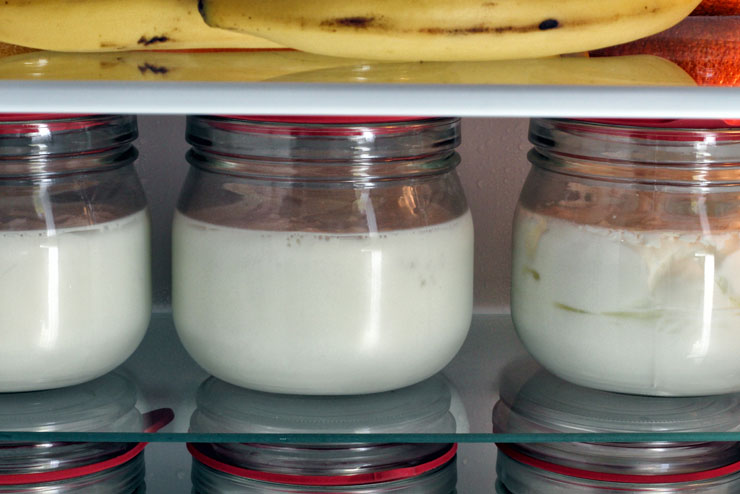
Remove kefir grains and fill the ready milk kefir into a suitable and lockable glass until it is ¾ full Close the lit until first resistance to make sure gas is able to escape. You can also use one of our special glasses with airlock** Now, let it ferment 5-10 days. The fermentation time depends on the room temperature. The warmer it is, the quicker your kefir is ready. Try the taste after 5 days of fermentation to not miss the point it tastes the best. Shake the milk kefir 1-2 times a day to avoid a weird tasting top that might built up. It is important to close the lit carefully before and open it again until first resistance afterwards After 5-10 days you can enjoy your nearly completely lactose free milk kefir and store it inside the fridge. There might be a very low level of lactose left. You should ask your doctor about how much lactose you tolerate even though there nearly is nothing left inside your well fermented milk kefir Enjoy your kefir!selfmade lactose free milk kefir
Print Recipe
Ingredients
Instructions
Have a lot of fun and success with preparing the lactose free milk kefir recipe. I’m looking forward to your opinion about this milk kefir recipe.
Do you have ideas? Then send it to us – please write a comment what do you think about this article.
See you!
Petra
Watch also this video and many more regarding Kefir and Kombucha on my Youtube channel…
* This is an Affiliate-Link – Affiliate-Links are sponsored Links

2 Comments
Heike Bludzuweit
Saturday November 9th, 2019 at 09:48 PMAlso bei 5 -10 Tagen hat man eine saure Matschepampe aber keinen leckeren Kefir.
24-36 Stunden ist die gängige Reifezeit.
Übrigens : nie Metallbesteck oder -behälter verwenden…
Petra
Monday November 11th, 2019 at 03:38 PMLiebe Heike,
vielen Dank für Ihren Kommentar:-)
Das Ergebnis ist auch noch von anderen Faktoren abhängig. Die Gärtemperatur und die Menge der verwendeten Kefirkulturen ist ebenfalls entscheidend! Und die Kulturen am besten nicht mit Leitungswasser spülen!
Liebe Grüße
Petra & Stephan